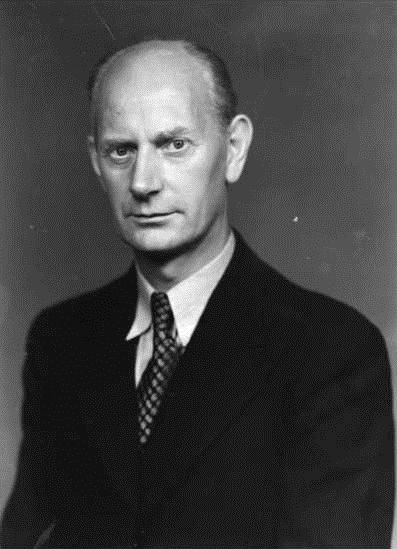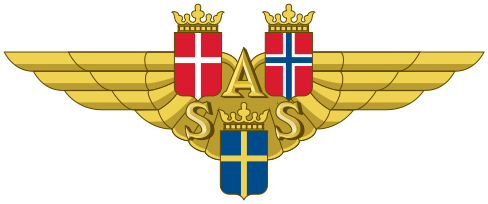Nordic Cooperation 1947 – 1960: a Norwegian perspective
Immediately before and after the Nordic Council was founded in 1952, there was much debate over what form cooperation should take amongst the Scandinavian/Nordic countries, primarily with respect to the economy and defence. Norway’s attempts to support a customs union/common market in 1947, 1950 and 1954 belied its repeated blocking of initiatives for closer cooperation. The Labour government’s pro-Nordic impulses were blocked by international as well as domestic concerns. The creation of the European Free Trade Area (EFTA) in 1959/60 created a way out of the conundrum.

Proposals for closer security and foreign economic policy cooperation between the Scandinavian countries (Denmark, Norway and Sweden) were raised repeatedly during the first 15 years after the Second World War. However, just as often as these initiatives were launched, they were rejected.
The initiatives for increased Scandinavian cooperation followed the Marshall Plan, the creation of the Organization for European Cooperation (OEEC), and the North Atlantic Treaty Organization (NATO). The Norwegian government suggested creating a Scandinavian customs union or similar economic cooperation in 1947, 1950 and 1954. At the same time, however, when plans materialised, Norway was the most negatively disposed of the three countries towards entering into a closer economic relationship.
Sweden put forward a proposal for a Scandinavian defence union in 1948, a project that failed due to the minimum conditions of the Swedes and Norwegians being incompatible. The most significant cooperation measures that were actually realised – the airline SAS (with respect to Denmark, Norway and Sweden), the Nordic Passport Union and the Nordic Council – were all much smaller and less extensive than the early ambitious proposals. The Nordic Council only included Finland from 1955.

PICTURE: SAS (Scandinavian Airlines System) was founded in 1946 as a Scandinavian Airline, initially to cooperate on intercontinental routes. This is the original emblem. Photo: Wikipedia. Ineligible for copyright.
The ’Norden’ dream
The idea of Nordic or Scandinavian political, economic and military cooperation emerged with renewed impetus after the Second World War. The war reinforced notions of similarities and common interests, although the three Scandinavian countries had experienced the war differently and bitterness towards the Swedish policy of neutrality was widespread in Norway during the early post-war years.
In the first 15 to 20 years after the war, Nordism, or Scandinavianism, was most widespread in Denmark and Sweden. In Norway, support primarily came from the Labour Party (Arbeiderpartiet) during this period.
Among the centre parties, particularly the Agrarian Party (Bondepartiet) and the Christian People’s Party (Kristelig Folkeparti), opposition against closer Nordic cooperation was widespread and emphatic. There were primarily historical reasons for this, but on the centre-right more broadly it was also caused by fears of longer term social democratic dominance. The ‘Nordic Dream’ was not in itself sufficient to trigger cooperation initiatives.
'Norden’ used as a defence mechanism
All the three Norwegian initiatives for Nordic economic cooperation, in 1947, 1950 and 1954, should not least be viewed in light of wider developments in Western Europe and American pressure to further European integration.
The first initiative, in 1947, was related to an American attempt, through the Marshall Plan, to pressure the countries of Western Europe into supranational economic cooperation. The Nordic countries were among the sceptics, so the proposal for a Nordic customs union was seemingly both a useful diversion from the European project and a defence mechanism intended to avoid diplomatic isolation.
Similar mechanisms were at play in 1950 and 1954-1955 when the initiatives coincided with renewed attempts at furthering European integration; the Coal and Steel Community in 1950, and the start of the European Economic Community negotiations in 1955. The Swedish proposal for a Scandinavian defence union in 1948 was also a response to the threat that Norway might join a North Atlantic alliance on its own, and thus both divide the Scandinavians and threaten Swedish neutrality.
How could it be that all these ideas failed to materialise when common interests and joint fears were so prevalent?
Norway jammed on the brakes
The progress towards economic cooperation was largely stalled by Norwegian opposition. This was partly due to fears of the economic consequences. Norway was concerned, and not without reason, that Norwegian manufacturing industry would lose out to the technologically advanced and capital-strong Swedish market. As for Norwegian agriculture, it would be at a disadvantage because of climatic and topographical conditions, particularly when facing the Danes. As the economic gains appeared modest at best, in the late 1950s the Labour Party decided not to push the Nordic customs union through parliament (Storting). The centre-right parties were virtually united in opposition and even within the Labour Party, there were sceptics.
Thus, the Labour leadership decided, against not inconsiderable opposition within the party, that maintaining a consensus on foreign policy was more important than possible marginal economic gains and the strengthening of Scandinavian social democratic cooperation.
Regarding defence cooperation, it was once again Norway who ended up saying no; Sweden was not able to accept even a limited formalised association with the Western powers, something which had been the minimum requirement from the Norwegian side.
Norwegian regrets
There is no doubt that the repeated Norwegian efforts to relaunch the negotiations that they themselves had aborted were due to a fear on the part of the Labour leadership that they would in retrospect be branded as having derailed Scandinavian, and in particular Scandinavian social democratic, cooperation. This was certainly the case with regard to Scandinavian defence cooperation. The agreements that were ultimately concluded, to a degree, may be explained in terms of such regrets.
EFTA – The best of all worlds
The agreement over the European Free-Trade Area of EFTA in 1959, which took effect in 1960, temporarily solved several Norwegian dilemmas. Economic cooperation between the Scandinavian countries was accomplished within EFTA. Norwegian exports gained improved access to larger foreign markets, the Norwegian agricultural sector was not included in EFTA, and special agreements were reached concerning the fishing industry.
Norway’s strong attachment to and broader cooperation with the United Kingdom satisfied those who looked towards the West and who feared that a Norden led by Sweden could easily diverge from North Atlantic cooperation. Such opinions were also to be found in the Labour Party.
Further reading:
- Hans Otto Frøland, 'Choosing the Periphery. The Political Economy of Norway’s European Integration Policy. 1948-73. Journal of European Integration History, 7, 1 (2001), pp.77-103.
- Hans Otto Frøland. 'European Trade Liberalization and the Stillborn Nordic Customs Union in the 1950s'. Scandinavian Economic History Review, 52, 2-3 (2004), pp. 133-154.
- Helge Pharo, 'Norway’s Search for Alternatives: The European Issue at Home and Abroad 1947-1994'. Bericht über das 10 Deutsch-Norwegische Historikertreffen in Bergen, Mai/Juni, 2000, Oslo, (2001), pp. 59-70.
- Helge Pharo, 'The Norwegian Labour Party'. R.T. Griffiths (ed.), in Socialist Parties and the Question of Europe (Leiden, 1993) pp. 201-220.
- Helge Pharo, 'From Reluctant Participant to Avid Contender: Norway and the Marshall Plan 1947-52'. R.T. Griffiths (ed.), in Explorations in OEEC History (Paris, 1997) pp. 73-85.
- Ingrid Sogner, 'The European Idea: The Scandinavian Answer: Norwegian Attitudes towards a Closer Scandinavian Economic Cooperation 1947-1959'. Scandinavian Journal of History, 18, 4 (1993), pp. 307-327.
- Olav Riste, Norway’s Foreign Relations – A History (Oslo, 2005).
Links:
- Thanks go to norgeshistorie.no for allowing us to translate this article. The original in Norwegian can be seen here: Nordisk samarbeid 1947–1960
